How to perform CPR - Adults & Older Children
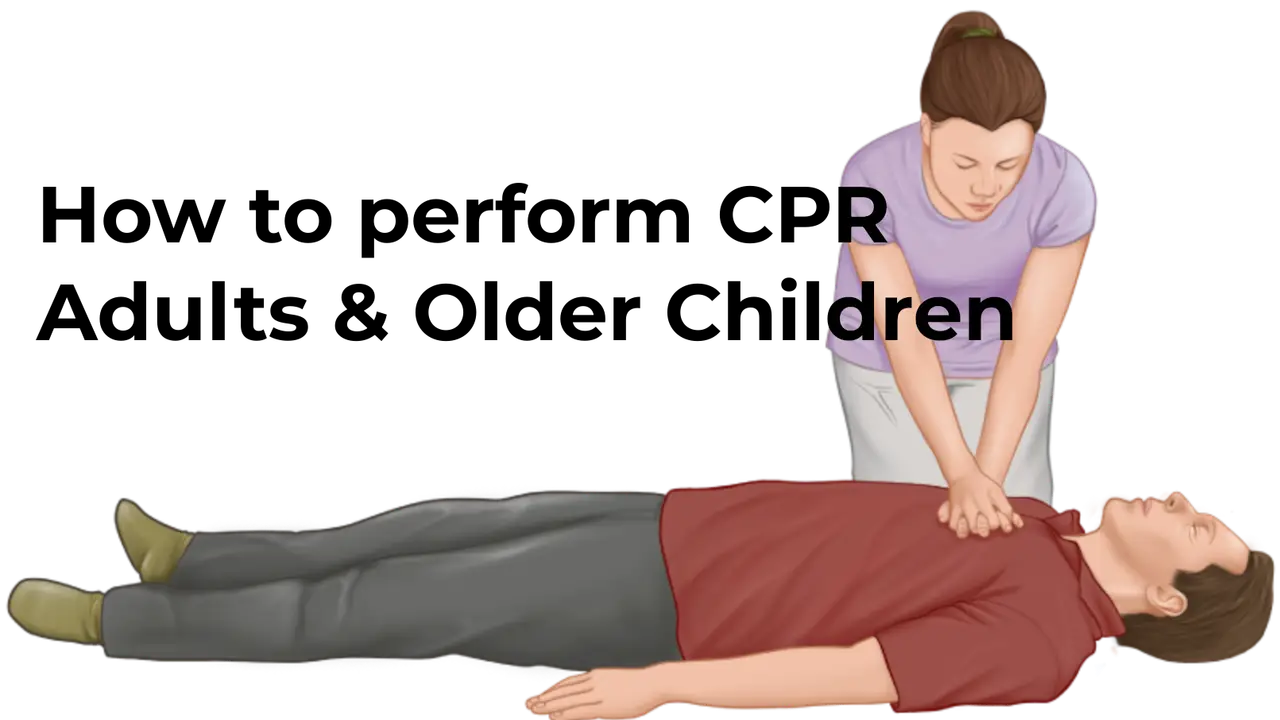

If you’re in an emergency, call (000)
Find out how to perform CPR on an adult or older child (over 8 years old) by following the guide below. You can also go to specific guides on CPR for children, infants and during pregnancy.
Please note, the information provided below is not a substitute for first aid training.
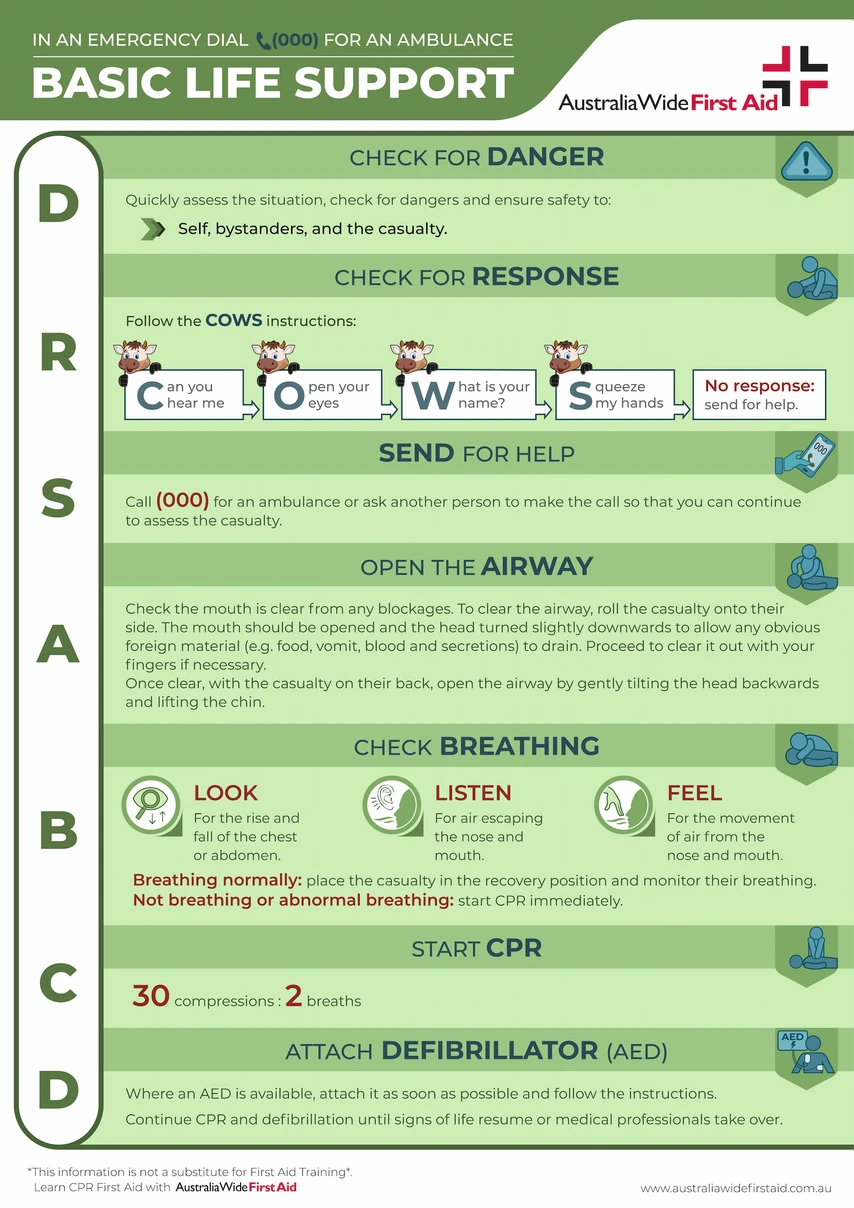
The DRSABCD action plan is a structured way of assisting a casualty. It includes vital steps such as assessing for danger, checking for a response, sending for help, clearing and opening the airway, and checking for breathing.
The Basic Life Support chart below shows all the critical steps leading up to performing cardiopulmonary resuscitation (CPR).
 - Adult BLS Chart (A2 & smaller)
- Adult BLS Chart (A2 & smaller)
We run certified First Aid courses throughout all major Australia citys. Find a location near you.
After having followed the DRSABCD plan, follow the steps below.
CPR is performed at a ratio of 30:2 (30 chest compressions + 2 rescue breaths).
1. Place the casualty on a firm surface on their back. Kneel beside them. 2. Place the heel of one hand on the lower half of the sternum.

3. Place your other hand on top. Straighten your arms and position yourself over the casualty’s chest.
4. Use the weight of your body to press straight down onto their chest by ⅓ the depth of their chest, which is generally more than 5 cm.

After the 30 compressions, give 2 rescue breaths.
1. Open the casualty's airway. Ensure the head is tilted back and the chin is lifted by placing one hand on their forehead and the other hand under their chin to tilt the head back.



One cycle of CPR consists of 30 compressions + 2 rescue breaths. Keep repeating this process and aim to do 5 cycles of CPR in roughly 2 minutes. Giving life-saving CPR is tiring. If you have another person to help you, swap with minimal interruption, so they give compressions and rescue breaths every 5 cycles.
Where an AED is available, turn it on and attach pads or have a bystander attach them so you can continue doing compressions. Follow the AED’s instructions. An AED will analyse heart rhythm every 2 minutes. It may or may not give a shock. Continue to give CPR in between each analysis cycle.
Find out more about using an AED.

Continue performing CPR until:
If the casualty resumes normal breathing then place them in the Recovery Position and monitor breathing until help arrives.

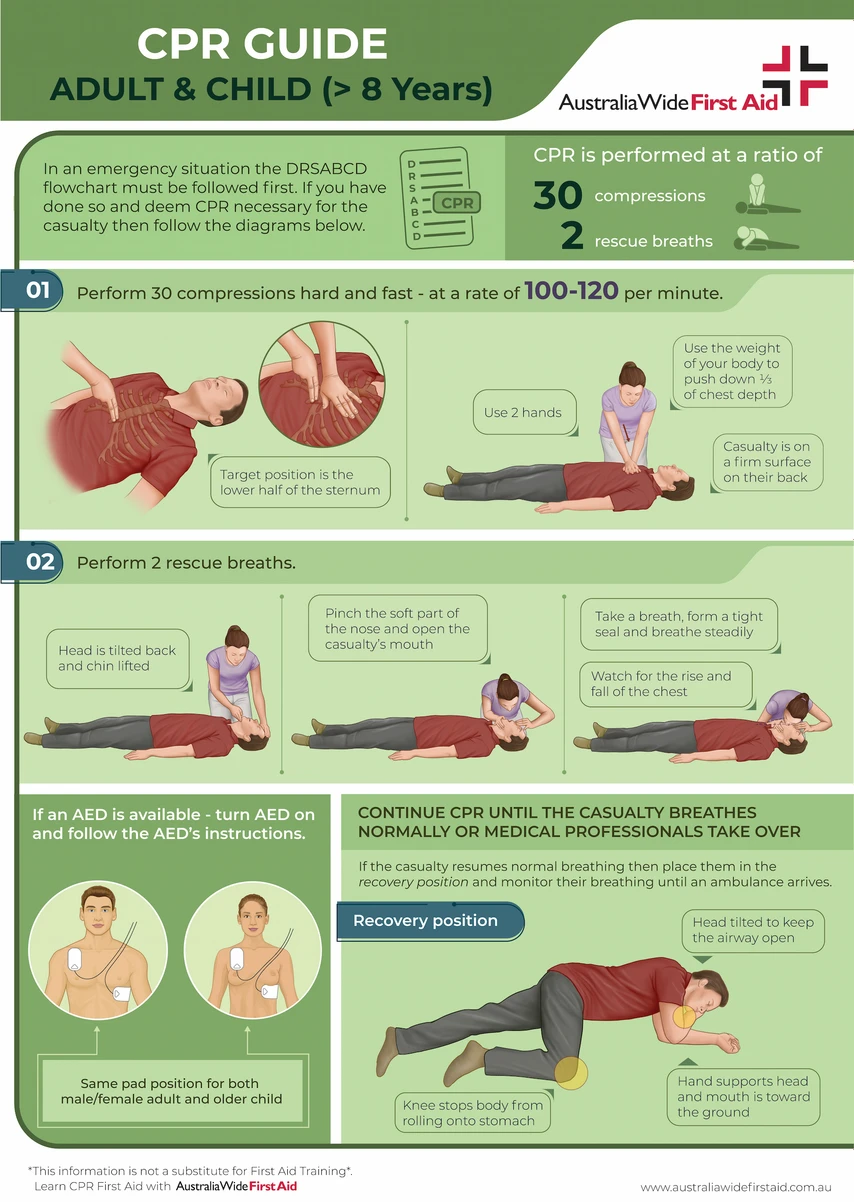
Clothing needs to be removed from the chest before performing CPR or using an AED, so placement of hands (CPR) or electrode pads (AED) is not compromised.
The prevailing circumstance is that the person’s life is hanging in the balance. Cultural sensitivity and dignity are important but preserving life is the top priority. If there are bystanders, you can ask them to respect the victim by clearing the area or at the very least turning away. The only witnesses should be those helping the victim. Obviously photos and videos would be discouraged. If there is a female first aider and a male first aider at the scene, it would be prudent for the female to manage first aid.
Hands are placed at the centre of the chest on the lower half of the breastbone. AED pads are placed, one on the upper right chest, the other on the lower left side of the chest, along the ribs.
When a bra is removed, breasts naturally fall to the sides, allowing for proper hand placement without needing to touch them. In the case of a person with large breasts, the left breast may need to be lifted for proper pad placement. Use the back of the hand to lift the breast while placing the pad. Metal in an underwire bra can potentially interfere with the shock an AED delivers, meaning it may not work when the bra is left on the patient. This would also apply to metal body jewellery. If possible, everything metal should be removed from the chest area. Once proper placement of pads is done, available clothing can be draped over the chest to preserve modesty.

Disclaimer: This article is for informational purposes only. It does not constitute, replace, or qualify as any form of first aid training.
Visit the Australia Wide First Aid CPR Library for even more information, guides and downloadable resources.
Our Pocket Mask Training online course gives you the knowledge you need to be able to effectively us a pocket mask or face shield during CPR. Being fully online means you can work through it at your own place, either at your desk at work or in the comfort of your own home. Read the texts, watch the videos, and answer the quiz questions - it's as easy as that! You'll also receive a Certificate of Completion at the end of the course - perfect to hand to your employer or put on your resume.
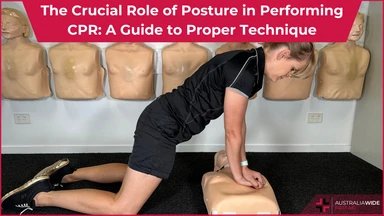
April 12, 2024
Cardiopulmonary resuscitation (CPR) is a critical lifesaving skill that can significantly improve the chances of survival for individuals experiencing cardiac arrest. While many people are trained in CPR techniques, the importance of proper posture during CPR cannot be overstated.
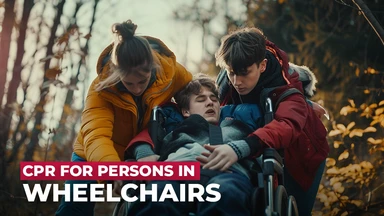
February 23, 2024
Despite its apparent simplicity, bystanders often delay providing CPR to people with special conditions such as those in wheelchairs. This delayed response may be due to a lack of knowledge on what to do in such situations or the perceived complexity of the procedure due to the casualty's condition. However, the CPR principle remains the same for all casualties, whether they are in wheelchairs or not.

November 1, 2023
In this spine-tingling journey of resuscitation, maintain your grim composure, for you tread the precipice between the realms of life and death. Whether you are a mere mortal or a master of the macabre arts, remember that your actions can either prolong existence or plunge it further into the abyss. Proceed with a sense of dread, for you stand at the precipice of despair.